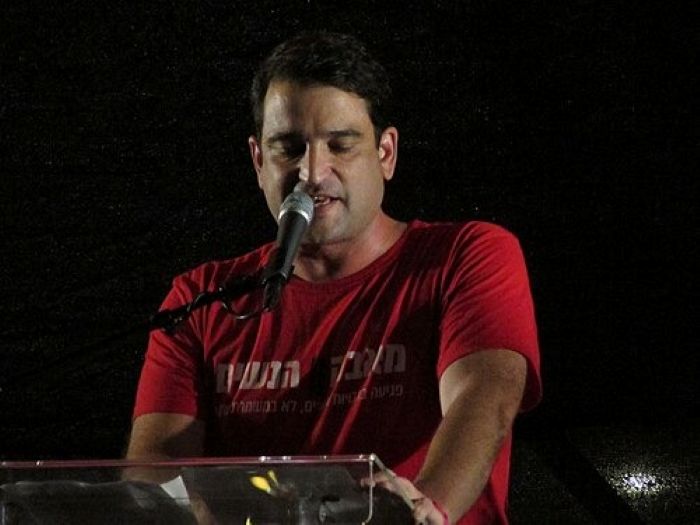The Navy’s ability to build lower-cost warships that can shoot down Houthi rebel missiles in the Red Sea depends in part on a 25-year-old laborer who previously made parts for garbage trucks.
Lucas Andreini, a welder at Fincantieri Marinette Marine, in Marinette, Wisconsin, is among thousands of young workers who’ve received employer-sponsored training nationwide as shipyards struggle to hire and retain employees.
The labor shortage is one of myriad challenges that have led to backlogs in ship production and maintenance at a time when the Navy faces expanding global threats. Combined with shifting defense priorities, last-minute design changes and cost overruns, it has put the U.S. behind China in the number of ships at its disposal — and the gap is widening.
Navy shipbuilding is currently in “a terrible state” — the worst in a quarter century, says Eric Labs, a longtime naval analyst at the Congressional Budget Office. “I feel alarmed,” he said. “I don’t see a fast, easy way to get out of this problem. It’s taken us a long time to get into it.”
Marinette Marine is under contract to build six guided-missile frigates — the Navy’s newest surface warships — with options to build four more. But it only has enough workers to produce one frigate a year, according to Labs.
Where have all the workers gone?
One of the industry’s chief problems is the struggle to hire and retain laborers for the challenging work of building new ships as graying veterans retire, taking decades of experience with them.
Shipyards across the country have created training academies and partnered with technical colleges to provide workers with the skills they need to construct high-tech warships. Submarine builders and the Navy formed an alliance to promote manufacturing careers, and shipyards are offering perks to retain workers once they’re hired.
Andreini trained for his job at Marinette through a program at Northeast Wisconsin Technical College. Prior to that, he spent several years as a production line welder, making components for garbage trucks. He said some of his buddies are held back by the stigma that shipbuilding is a “crappy work environment, and it’s unsafe.”
But that’s not the reality, he said. His health benefits are better than at his previous job, he’ll be getting a pension for the first time, and there’s an opportunity to acquire skills even more advanced than what he received during his initial training.
Plus, Andreini says, he feels like he’s serving his country.
“It makes me happy to be able to do my part, and possibly make sure sailors and some of my friends in the service come home safely,” said Andreini, whose father was in the Navy in Vietnam.
Alonie Lake, also a welder, fellow graduate of the technical college’s program and a single mom, is happy for a job with long-term stability — something Marinette’s backlog of Navy contracts virtually guarantees.
Lake, 32, said she thinks a lot of younger people are interested in jobs in the trades “and the satisfaction of working with their hands to create tangible results.”
Navy Secretary Carlos Del Toro recently underscored the importance of training programs during commencement ceremonies at a community college in Maine. The college has partnered with nearby Portsmouth Naval Shipyard to teach workers the skills needed to repair nuclear submarines.
“It is incumbent upon all of us to consider how we can best lend our talents and, in the case of the graduates, their newly developed skills, to build up our great nation for all Americans, and defend against the threats and challenges of today,” he said.
Once workers are hired, will they stay?
The Navy is trying to help shipyards ensure that once new workers are trained and hired, they stick around in a tight labor market.
In Wisconsin, part of $100 million in Navy funding that’s being provided to Marinette Marine is being used for retention bonuses at the shipyard, whose past employee retention was described by Del Toro as “atrocious.”
The shipyard, which employs more than 2,000 workers, is providing bonuses of up to $10,000 to keep workers, said spokesperson Eric Dent. “The workforce shortage is definitely a problem and it’s a problem across the board for all shipyards,” he said.
Retention is a concern even for shipyards that have met their goals, including Huntington Ingalls Industries, which makes destroyers and amphibious warships in Mississippi and aircraft carriers and submarines in Virginia.
The company is creating training partnerships with colleges and public schools at all grade levels. Enhancements in Mississippi include more than a million square feet (92,900 square meters) of covered work area, cooldown and hydration stations, and a second dining area with a Chick-fil-A. Huntington Ingalls also collaborated with the Navy and the city of Newport News, Virginia, to build a new parking garage for workers and sailors.
A problem decades in the making
Much of the blame for U.S. shipbuilding’s current woes lies with the Navy, which frequently changes requirements, requests upgrades and tweaks designs after shipbuilders have begun construction.
That’s seen in cost overruns, technological challenges and delays in the Navy’s newest aircraft carrier, the USS Ford; the spiking of a gun system for a stealth destroyer program after its rocket-assisted projectiles became too costly; and the early retirement of some of the Navy’s lightly armored littoral combat ships, which were prone to breaking down.
The Navy vowed to learn from those past lessons with the new frigates they are building at Marinette Marine. The frigates are prized because they’re less costly to produce than larger destroyers but have similar weapon systems.
The Navy chose a ship design already in use by navies in France and Italy instead of starting from scratch. The idea was that 15% of the vessel would be updated to meet U.S. Navy specifications, while 85% would remain unchanged, reducing costs and speeding construction.
Instead, the opposite happened: The Navy redesigned 85% of the ship, resulting in cost increases and construction delays, said Bryan Clark, an analyst at the Washington-based think tank Hudson Institute. Construction of the first-in-class Constellation warship, which began in August 2022, is now three years behind schedule, with delivery pushed back to 2029.
The final design still isn’t completed.
Shifting threats and changing plans
Complicating matters further is something out of the Navy’s control: the changing nature of global threats.
Throughout its history, the Navy has had to adapt to varying perils, whether it be the Cold War of past decades or current threats including war in the Middle East, growing competition from Chinese and Russian navies, piracy off the coast of Somalia and persistent attacks on commercial ships by Houthi rebels in Yemen.
And that’s not all. The consolidation of shipyards and funding uncertainties have disrupted the cadence of ship construction and stymied long-term investments and planning, says Matthew Paxton of the Shipbuilders Council of America, a national trade association.
“We’ve been dealing with inconsistent shipbuilding plans for years,” Paxton said. “When we finally start ramping up, the Navy is shocked that we lost members of our workforce.”
The Navy insists it’s taking the shipbuilding problems seriously.
“The Navy’s role in defending our nation and promoting peace has never been more expansive or mattered more,” said Lt. Kyle Hanton, a spokesperson for Del Toro’s office. “We continue to work with our industry partners to identify creative solutions to solving our common challenges.”
(AP)











